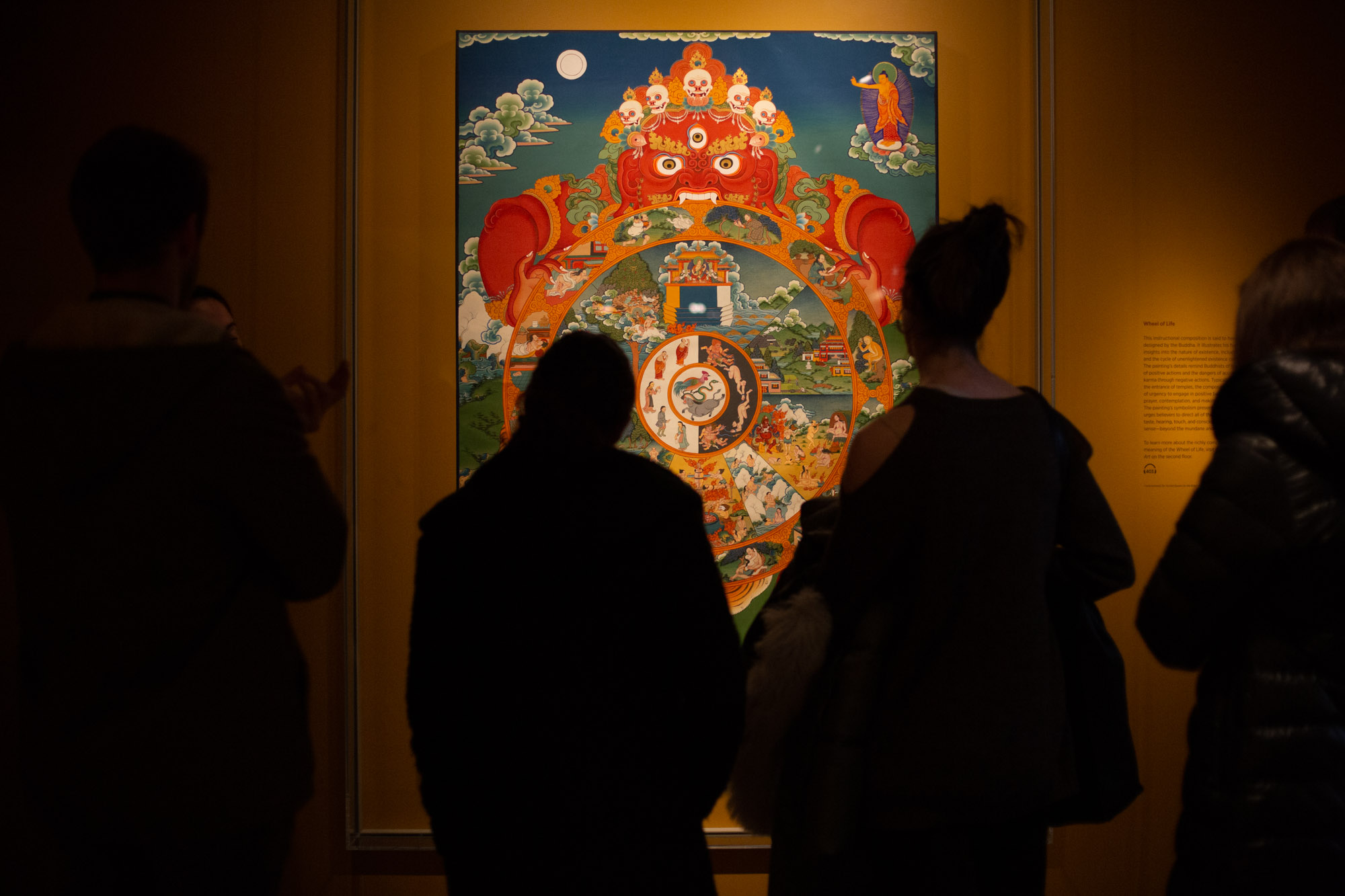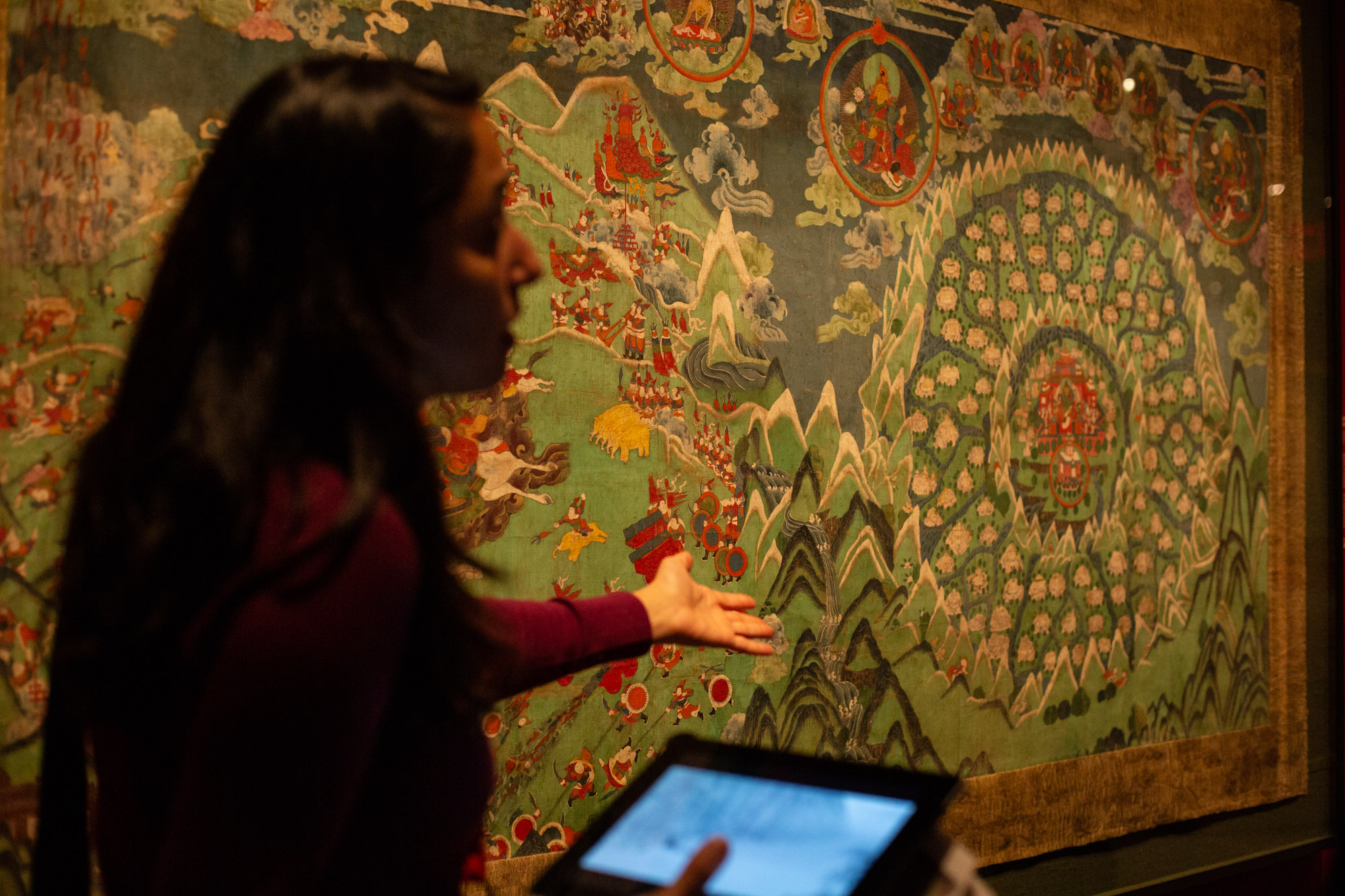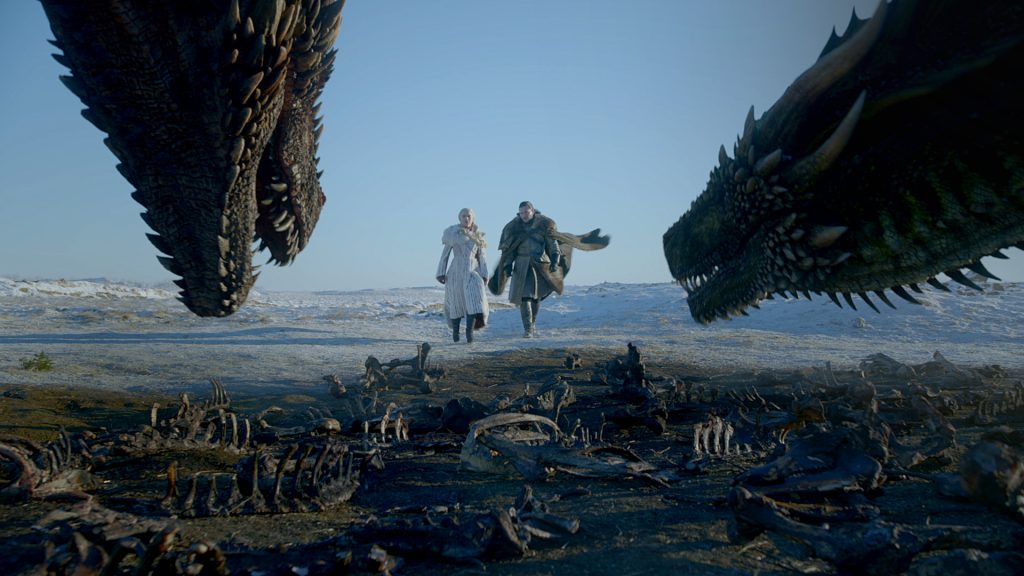Of the millions of viewers expected to watch Game of Thrones when it returns for its final season on April 14, few, if any, will be tuning in because they think it is a particularly Buddhist show. Yet a new tour at the Rubin Museum of Art in New York City makes the case that the fantasy series and Buddhism have more in common than we might think.
Take, for example, this line spoken by the dragon-riding queen Daenerys Targaryen about the noble families: “Lannister, Targaryen, Baratheon, Stark, Tyrell. They’re all just spokes on a wheel. This one’s on top, then that one’s on top—and on and on it spins, crushing those on the ground . . . I’m not going to stop the wheel. I’m going to break the wheel.”
At a preview of the tour, our guide and the Rubin’s manager of docent and access programs, Laura Sloan, read this quote in front of a Tibetan painting of the wheel of life, depicting the cycle of birth and death. “What are some examples of rebirth in Game of Thrones?” Sloan asked. Multiple examples sprang to mind: the zombie hordes of the White Walkers, the reanimated knight known as The Mountain, the resurrected protagonist John Snow. As we continued, it quickly became clear that the similarities ran deeper than coincidental imagery, and more common themes begin to emerge: power, magic, religion in politics, desires—the list goes on.

For some, the violent and sexual imagery in the HBO series might appear to be fundamentally at odds with the peaceful and chaste depictions of the Buddha, but, as with any other belief system, Buddhists have not always lived up to their own ideals.
To demonstrate this, the tour stopped in front of an 18th-century painting depicting the fifth patriarch of the Sakya lineage of Tibetan Buddhism, Chogyal Pagpa (1235–1280), sitting beside the Mongolian emperor Kublai Khan (1215–1295). Sloan held up a picture of Cersei Lannister and read a quote from the diabolical queen: “The Faith and the Crown are the two pillars that hold up this world. One collapses, so does the other.”
Thrones fans will know that this line marks the beginning of a union between Cersei and the seemingly benign High Sparrow, a man-of-the-people religious figure who preaches poverty but seeks out power. However, their alliance ends (spoiler alert) after the High Sparrow imprisons, tortures, and then publicly shames Cersei, who retaliates by blowing up his church with everyone inside.
This over-the-top piece of fiction highlights a harsh reality—that the historical relationships between Buddhist and political leaders have been far from pristine. Like the High Sparrow’s devout enforcers, the Faith Militant, some Tibetan Buddhist monasteries had “defense” forces, despite their espoused non-violent views. And while spiritual leaders like Chogyal Pagpa and his predecessor and uncle Sakya Pandita (1182–1251) were said to be instructing the ruling class in Buddhist teachings in order to ennoble them, they benefited from the protection of armies and wealth of conquerors. In fact, the Chogyal Pagpa-Kublai Khan painting is part of an exhibition called Faith and Empire: Art and Politics in Tibetan Buddhism, which demonstrates that these unscrupulous pacts have existed throughout time. (Moral ambiguity, of course, is not limited to Tibetan Buddhism.) In some cases, Buddhist leaders were even called upon to wage magical warfare upon political enemies (think Stannis Baratheon and the Red Witch). Having religious figures cast spells and secure the aid of protector deities became a common practice in Tibet and China.

For the Thrones fans who are more interested in battles than political intrigue, Himalayan Buddhist art has much to offer as well. Large scale paintings depict holy wars, where Buddhist warriors can be seen wielding vajras, mace-like weapons that represent an unstoppable force and are sometimes depicted as thunderbolts. The works offer a mythologized version of what were historical clashes between Buddhist kingdoms and their enemies. These revisionist histories cover up the nuance of these struggles, painting the victors as divine heroes, much like how the propagandist plays in Game of Thrones sing the praises of whoever happens to be king.
Demons, fierce warriors, zombies—once the comparisons start, the temptation to point out connections between Buddhism and Game of Thrones becomes hard to resist. But Game of Thrones author George R. R. Martin has never spoken about Buddhist influences in his work and has instead pointed to European history as his inspiration, so any apparent overlap is likely unintentional. The common themes may be due to a shared interest in human struggles—or perhaps our minds are just good at finding patterns wherever we search for them.
Regardless of the reason, the numerous links between these two seemingly unrelated worlds speaks to a shared need for myth and meaning across eras, continents, and cultures. And at the very least, they can serve as an endless source of amusement and fascination.
The Rubin Museum’s Game of Thrones tours begin on April 12.
Thank you for subscribing to Tricycle! As a nonprofit, we depend on readers like you to keep Buddhist teachings and practices widely available.
